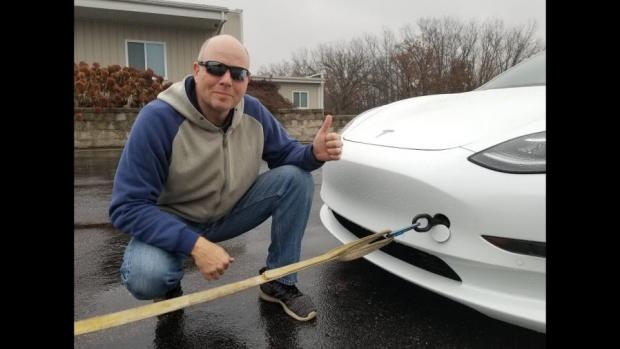
Breaking News
 Trump Halts Five Wind Farms Off the East Coast – 'A major victory for American energy...'
Trump Halts Five Wind Farms Off the East Coast – 'A major victory for American energy...'
 CDC to end animal testing in groundbreaking decision that will impact hundreds of experiments
CDC to end animal testing in groundbreaking decision that will impact hundreds of experiments
 Once-thriving shopping mall in ailing Democrat-run city is eerily empty on last Sunday before...
Once-thriving shopping mall in ailing Democrat-run city is eerily empty on last Sunday before...
 One-of-a-kind trimaran is set to be pedaled around the world
One-of-a-kind trimaran is set to be pedaled around the world
Top Tech News
 Perfect Aircrete, Kitchen Ingredients.
Perfect Aircrete, Kitchen Ingredients.
 Futuristic pixel-raising display lets you feel what's onscreen
Futuristic pixel-raising display lets you feel what's onscreen
 Cutting-Edge Facility Generates Pure Water and Hydrogen Fuel from Seawater for Mere Pennies
Cutting-Edge Facility Generates Pure Water and Hydrogen Fuel from Seawater for Mere Pennies
 This tiny dev board is packed with features for ambitious makers
This tiny dev board is packed with features for ambitious makers
 Scientists Discover Gel to Regrow Tooth Enamel
Scientists Discover Gel to Regrow Tooth Enamel
 Vitamin C and Dandelion Root Killing Cancer Cells -- as Former CDC Director Calls for COVID-19...
Vitamin C and Dandelion Root Killing Cancer Cells -- as Former CDC Director Calls for COVID-19...
 Galactic Brain: US firm plans space-based data centers, power grid to challenge China
Galactic Brain: US firm plans space-based data centers, power grid to challenge China
 A microbial cleanup for glyphosate just earned a patent. Here's why that matters
A microbial cleanup for glyphosate just earned a patent. Here's why that matters
 Japan Breaks Internet Speed Record with 5 Million Times Faster Data Transfer
Japan Breaks Internet Speed Record with 5 Million Times Faster Data Transfer
Can You Tow Charge A Tesla Model 3? Watch To Find Out

Most electric vehicles have a special superpower. Pull them down the road using another vehicle — rolling down a steep incline has a similar effect — and the regenerative braking function can actually put power back into the battery. Turns out, the Tesla Model 3 is no exception here and can also pull off this party trick if needed. How do we know? The Tech Forum YouTube channel, hosted by Matt Shumaker, has posted a couple of videos of the car doing just that and they're a lot more interesting than one might suspect. The first video (above) shows their initial attempts at the range-extension technique, while the second (below) sees them try it again and attempt to acquire some useful data.
Now, between the two towing attempts, Shumaker updated his car's software to version 9. That may have had a slight effect on his results, as he says regen is a bit stronger with the updated software. Also, while the distance covered in the first video was less than a mile, the second test, performed on a flat loop in a residential neighborhood at low speeds, was a full mile.
As they pull, the screen in the Model 3 screen energy consumption screen displays the effect of the electricity being generated, which, for the most part, measures out at a little more than 1 kWh per mile. Though, as we said, the experiment was conducted at low speed, going faster wouldn't necessarily put even more energy back in, as that rate is limited by the car.

 Advanced Propulsion Resources Part 1 of 2
Advanced Propulsion Resources Part 1 of 2

